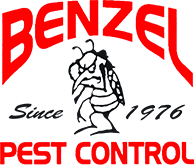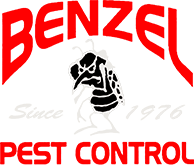First off, I would like to apologize to the crowd of my readers that have endured an agonizing 10 month wait between blog posts. As if Wyoming and Nebraska Winters weren't harsh enough, you were, no doubt, forced to entertain yourselves with things other than harrowing tales of pest invasions and the rewards of managing them. I will now do my best to thaw the deep frost of your boredom and anticipation.
In my last post, I promised to dazzle you with personal experiences that I and other local pest management professionals have had with Reticulitermes flavipes, aka the eastern subterranean termite.
Here are a few of the more remarkable feats accomplished by this seemingly tiny, soft-bodied insect.
When Customers Close a Door, The Termites See a Window....
I have seen termites damage the composite wooden panels on an overhead garage door that was frequently used. So, what? Termites eat wood, why wouldn't they eat a door? Because, considering that these insects come up from the soil, and all of their above-ground foraging and feeding is done inside of excavated galleries or inside of mud tunnels that they create, that means that despite some pretty regular and rough disruptions to their food source, they managed to either do all of the damage to the door in very persistent return visits, or all of the damage very quickly in a brief period of the door's inactivity. Have you ever read a longer sentence? The termites made me do it. I should have drawn a picture.
When All Other Food Sources Are Exhausted...
I once visited a customer's house after they had been out of town for about a week and a half. Both of us were shocked to see that termites foraging through a bedroom wall had exited the sheetrock wall covering, tunneled down the wall's surface to the bed and constructed a mud tunnel across the customer's pillow. I should point out that this occurred before we began control measures at the home.
Hungry For Knowledge...
Books, magazines, newspapers, cardboard boxes, check registers, business documents, and pictures. This one is not so shocking to those who work with termites often, but it is shocking to people that lose these things to a colony with an insatiable appetite for cellulose. And destruction, for you Guns and Roses fans out there.
Rocky Mountain High...
I have heard people assert that certain geographies with high altitudes are impervious to termite infestation. Maybe sometimes they are right, but I don't think that is the case anywhere near us.
While working in the Medicine Bow National Forest, West of Wheatland, Wyoming, I found termites doing damage to a house, a shed and absolutely moving through aged woodpiles. This was at 7,200 feet above sea level. So do you live in a place that is too high for termites? Probably not.
Produce Aisle
I once heard a report of termites eating the centers out of living tulip stems in Lusk, Wyoming. It seemed like an unconfirmed anecdote bordering on urban legend. While Lusk termites seem to be a special breed, capable of things that termites in neighboring towns haven't figured out yet, conventional wisdom said that termites eat dead things, not living things. The day that I found termites eating a live apple tree in Torrington, I started to think that there might be something to the story. When I asked my Dad, a longtime termite veteran, what the strangest termite stories that he could remember were, he told me that he had come across termites eating live carrots in Sidney, Nebraska. So tulips? Plausible.
Clean as a Whistle.
Subterranean- situated or operating beneath the earth's surface. Right? Usually. I told you that Lusk was an amazing place for termites and those that work with them so here's another one. When you find termites doing damage to a home, you typically inspect to find the link that leads back to the soil. Once you have found that, you treat accordingly. As it turns out, it has been proven that termites don't live in the soil because they have any special attachment to it, it just happens to hold moisture very well. If termites can maintain the humidity levels necessary, they can construct and thrive in carton nests virtually anywhere they want. That was the case with one colony of termites situated above a shower in Lusk, where termites were actively foraging and damaging the area surrounding the shower but we could find no tunneling or other active route leading to the soil.
Maybe because I started this whole termite discussion with a previous blog post referencing termites in Cheyenne, Wyoming you expect me to tell you a story about just that. Truth is, I have never seen termites in Cheyenne. The belief among some pest controllers is that they don't exist. Maybe they don't. But I have seen termites in Northern Colorado, Laramie, LaGrange, and Pine Bluffs, which makes a pretty tidy geographical ring around Cheyenne. So could termites be in Cheyenne? That depends on whether they want to be.
I hope that after reading this you have come to appreciate that termites are alive and well in our neck of the woods and that as a very successful social insect they can, at times, amazing the people that work with them every day of their career. The good news is, they can be controlled, and as a member of a team that has protected nearly 2,000 structures in Wyo-Braska, I can help.
Thanks for reading The People's Entomologist, who happens to be where the pests are, and by no coincidence, are where you are.

